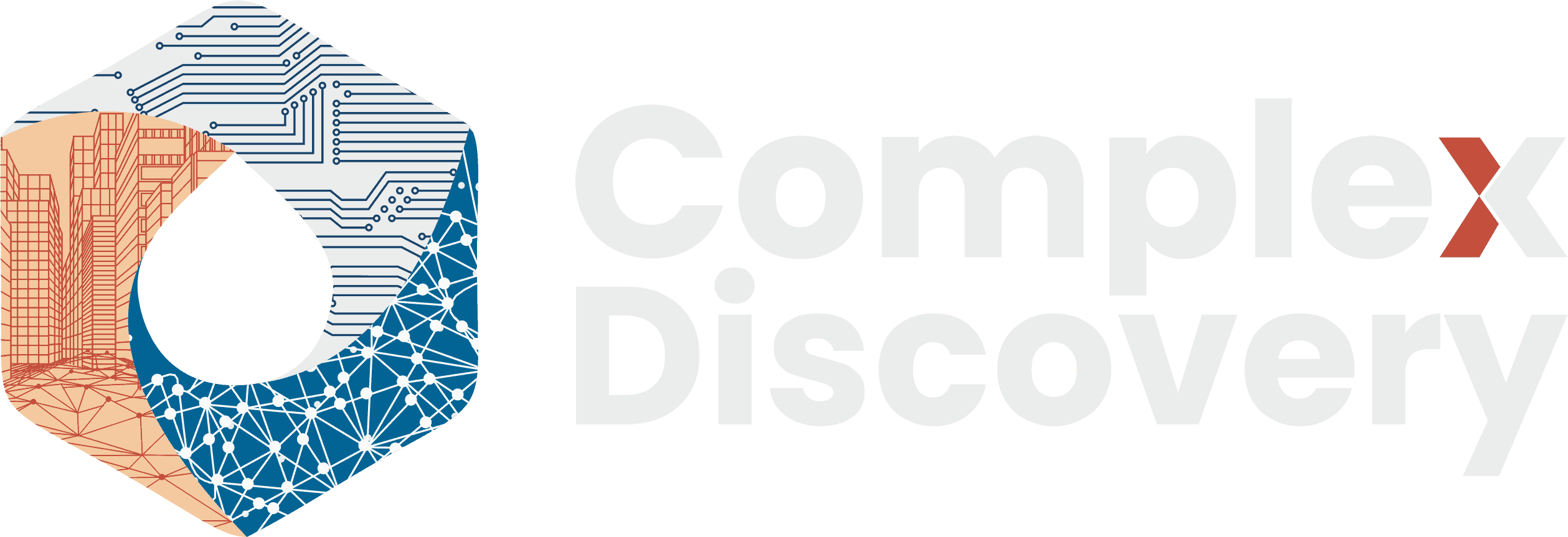|
|
Content Assessment: Not So Outstanding? eDiscovery Operational Metrics in the Winter of 2021
Information - 90%
Insight - 100%
Relevance - 100%
Objectivity - 95%
Authority - 95%
96%
Excellent
A short percentage-based assessment of the qualitative benefit of the recent post on eDiscovery operational metrics.
Editor’s Note: This is the ninth quarterly eDiscovery Business Confidence Survey from ComplexDiscovery that has included three optional questions regarding business operational metrics. Since the introduction of specific operational questions around Days Sales Outstanding (DSO), Monthly Recurring Revenue (MRR), and customer revenue distribution, more than 1,010 legal, information technology, and business professionals have responded with their thoughts. 54 respondents shared their opinions on these three questions as part of the most recent survey and the aggregate results of the answers to all nine quarterly surveys seeking answers to these questions are shared in the following observations and charts.
The Kinetics of Three eDiscovery Business Metrics in the Winter of 2021
The eDiscovery Business Confidence Survey is a non-scientific quarterly survey designed to provide insight into the business confidence level of individuals working in the eDiscovery ecosystem. The survey consists of nine core multiple-choice questions focused on factors related to the creation, delivery, and consumption of eDiscovery products and services. Additionally, the survey includes the following three optional questions focused on the business operational metrics of days sales outstanding (DSO), monthly recurring revenue (MRR), and revenue distribution across customer bases.
- How would you characterize the trajectory of your organization’s Days Sales Outstanding (DSO) during the last quarter? DSO represents the average number of days it takes credit sales to be converted into cash, or when a company’s account receivables can be collected.
- How would you characterize the trajectory of your organization’s Monthly Recurring Revenue (MRR) during the last quarter? MRR is income that a company can reliably anticipate every 30 days. Revenue from one-time purchases billed at the time of purchase is not included in MRR.
- Which of the following statements best describes the distribution of your organization’s revenue across your customer base during the last quarter? Distribution is the reduction of revenue concentration across the customer base. The customer base is the group of customers who repeatedly purchase the products or services of a business.
Survey participants were presented with four potential answers to the optional business operational metric questions and asked to select one. The choices were as follows:
- Increasing
- Unfluctuating
- Decreasing
- Do Not Know
The aggregate results of the answers to the business operational metric questions are shared in the following observations and charted overviews. They provide an interesting vector view of the trajectories of these important measurements and the results may also be helpful to business and legal professionals as they consider the current conditions and trends in the business of data and legal discovery.
Key Observations in the Winter of 2021
General
- In the winter of 2021, 54 eDiscovery Business Confidence Survey participants chose to answer at least one of the optional business operational metric survey questions in the quarterly survey. This represents a strong number of participants given the intentional limiting of survey email requests to balance against the recent proliferation of new industry surveys and higher volumes of email communications initiated during the current pandemic.
- In the winter of 2021, 90.0% of eDiscovery Business Confidence Survey participants chose to answer at least one of the optional business operational metric questions in the quarterly survey. This is a slight increase in percentage from 89.1% of participants answering the optional business operational metric questions in the fall of 2020 survey.
- In the winter 2021 survey, between 29.6% and 24.1% of the respondents (depending on the question) did not know whether DSO, MRR, or distribution of customer revenue-based measures were increasing, unfluctuating, or decreasing.
Days Sales Outstanding (Chart 1)
- Exactly 31.5% of survey respondents reported DSO as increasing in the winter of 2021. This is an increase from 21.9% reporting DSO as increasing in the fall of 2020. This is also the highest percentage of respondents reporting DSO as increasing since the introduction of operational metric questions into the business confidence survey.
- There was an increase (3.6%) in the winter 2021 percentage (29.6%) of respondents reporting DSO as unfluctuating when compared to fall 2020 reporting (26.0%). This is the second-highest percentage of respondents reporting DSO as unfluctuating since the introduction of operational metric questions into the business confidence survey, with the highest being the 34.7% reported in the winter 2020 survey.
- Only 9.3% of survey respondents reported DSO as decreasing in the winter of 2021. This is a solid decrease from reporting in the fall of 2020 when 12.3% of respondents noted decreasing DSO.
Monthly Recurring Revenue (Chart 2)
- There was a marked increase (6.6%) in the winter 2021 percentage (29.6%) of respondents reporting increasing MRR when compared to fall 2020 reporting (23.0%). This represents an increase in the quarter over quarter growth from the fall of 2020. It is also the fourth-highest percentage of respondents reporting MRR as increasing since the introduction of operational metric questions into the business confidence survey occurred.
- There was a strong increase (11.2%) in the winter 2021 percentage (31.5%) of respondents reporting MRR as unfluctuating when compared to fall 2021 reporting (20.3%)
- Just over 11% (11.1%) of survey respondents reported Monthly Recurring Revenue (MRR) as decreasing in the winter of 2021. This is a strong decrease from the 18.9% reporting MRR as decreasing in the fall of 2020. However, it is still the fourth-highest percentage of respondents reporting MRR as decreasing since the introduction of business operational metric questions to the eDiscovery Business Confidence Survey in the winter of 2019.
Distribution of Revenue Across Customer Base (Chart 3)
- The percentage of survey respondents reporting an increasing distribution of revenue across their customer base increased (8.5%) between the fall of 2020 (23.0%) and the winter of 2021 (31.5%). This is also the third-highest percentage of respondents reporting the increasing distribution of revenue across their customer base since the introduction of operational metric questions into the business confidence survey.
- There was a solid increase in the winter 2021 percentage (31.5%) of respondents reporting the distribution of revenue across their customer base as unfluctuating when compared to fall 2020 reporting (27.0%). This is also the highest percentage of respondents reporting the unfluctuating distribution of revenue across their customer base since the introduction of operational metric questions into the business confidence survey.
- There was also a decrease (7.4%) in the percentage of survey respondents reporting a decrease in revenue distribution across their customer base, with 12.9% reporting a decreasing distribution of revenue in the winter of 2021. This is the fourth-highest percentage of respondents reporting decreasing distribution of revenue across their customer base since the introduction of operational metric questions into the business confidence survey.
Survey Charts
(Charts Can Be Expanded for Detailed Viewing)
Chart 1: An Aggregate Overview of Days Sales Outstanding (DSO) Trajectory
1-Days-Sales-Outstanding-Winter-2021Chart 2: An Aggregate Overview of Monthly Recurring Revenue (MRR) Trajectory
2-Monthly-Recurring-Revenue-Winter-2021Chart 3: An Aggregate Overview of Distribution of Revenue Across Customer Base
3-Customer-Revenue-Distribution-Winter-2021Running Listing of eDiscovery Business Confidence Survey Results
- Winter 2021 Survey (3 January – 12 January 2021)
- Fall 2020 Survey (21 September – 1 October 2020)
- Summer 2020 Survey (26 June – 10 July 2020)
- Spring 2020 Survey (2 April – 15 April 2020)
- Winter 2020 Survey (28 December 19 – 11 January 2020)
- Fall 2019 Survey (29 September – 17 October 2019)
- Summer 2019 Survey ( 1 July – 17 July 2019)
- Spring 2019 Survey (1 April – 18 April 2019)
- Winter 2019 Survey (27 December 2018 – January 10, 2019)
- Fall 2018 Survey (14 October – 26 October 2018)
- Summer 2018 Survey (4 July – 24 July 2018)
- Spring 2018 Survey (7 April – 20 April 2018)
- Winter 2018 Survey (24 December 17 – 15 January 2018)
- Fall 2017 Survey (5 October – 17 October 2017)
- Summer 2017 Survey (6 July – 31 July 2017)
- Spring 2017 Survey (14 April – 1 May 2017)
- Winter 2017 Survey (20 January – 6 February 2017)
- Fall 2016 Survey (11 October – 1 December 2016)
- Summer 2016 Survey (1 August – 31 August 2016)
- Spring 2016 Survey (1 May – 31 May 2016)
- Winter 2016 Survey (15 February – 29 February 2016)
Additional Reading























